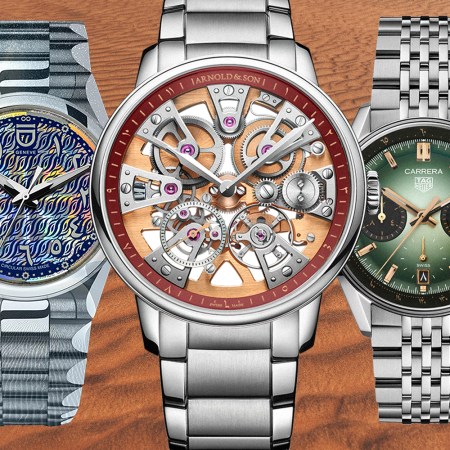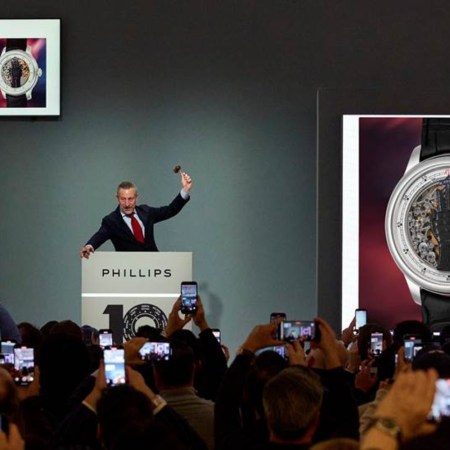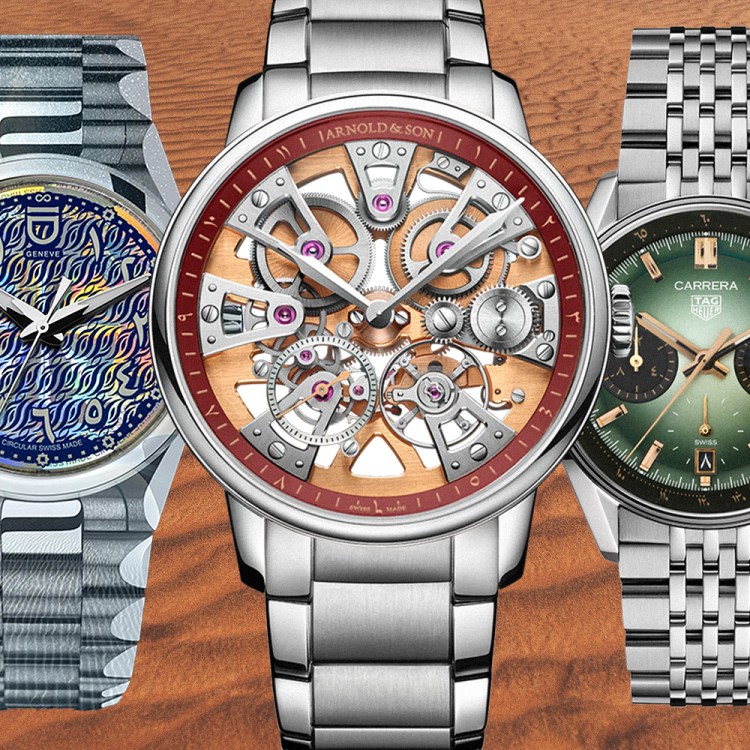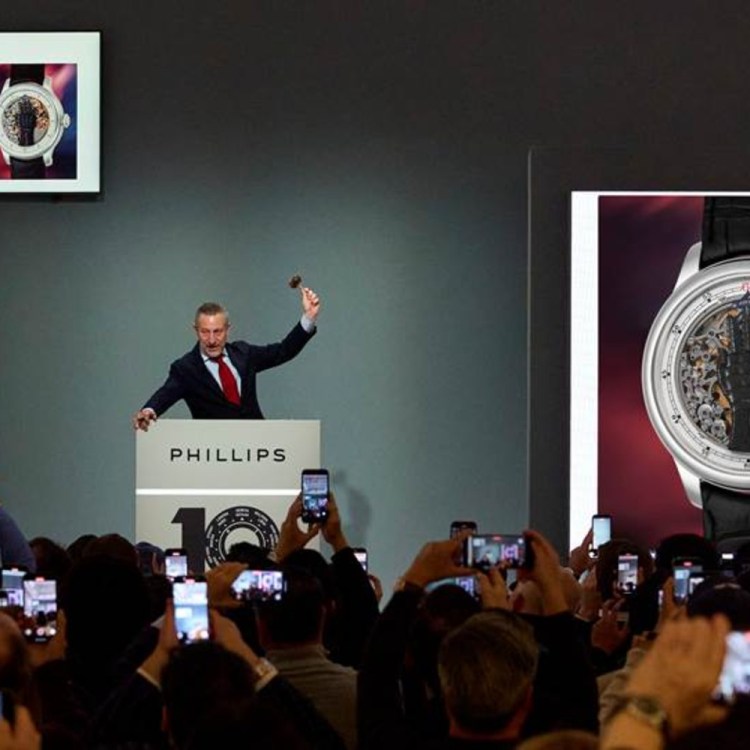You may recall Vacheron Constantin’s Berkeley Grand Complication from last year, a grapefruit-sized timepiece made on commission that contained a whopping 63 complications; it’s still the world’s most complicated watch. Not to be outdone by itself, Vacheron upped the ante by designing and producing the Solaria, the world’s most complicated wristwatch, packing it with 41 complications. Incredibly, it measures just 45mm wide and 14.99mm thick, a wondrous feat of micro-engineering, to say the least.
Unlike the Berkeley, the Solaria can be worn, and it’s also not a commission. Though the piece exhibited at Watches and Wonders last week is currently the only example in existence, it represents merely the first example of an internally-motivated Vacheron project. TL;DR: The watch is for sale, and subsequent iterations will be produced with tweaks to make each timepiece unique. (While the watch has no associated price, expect something along the lines of “If you have to ask…”)
The result of a single watchmaker’s labor working under carte blanche conditions for eight years, the Solaria is an astounding feat of sophisticated haute horlogerie: Of its 41 complications, it boasts a Westminster minute repeater with four gongs and four hammers; five astronomical complications; a Gregorian perpetual calendar; a world timer; a split-seconds chronograph; and much more. Displayed upon dual dials (front and back), said complications are powered by the Calibre 3655, a hand-wound movement with 1,521 components that necessitated the filing of 13 patent applications (seven of these are for the chiming mechanism alone). Nine types of finishing ensure that the movement is not only functional but also beautiful.
One might expect that a wristwatch fitting such a complicated description is all but illegible, but thankfully, this is most certainly not the case. Vacheron Constantin gave the Solaria a distinctly modern dial with color-coded componentry to help differentiate its numerous displays and complications. Featuring a black background with subdials and a luminescent sword handset, it’s surprisingly readable despite the wealth of information on offer. While each subdial combines multiple complications, there’s thankfully no need to break out a loupe to get your bearings — though whether you’ll actually be using the watch to calculate, say, “the time it takes for a constellation or a given star to appear centered in the observer’s field of vision” is up for debate.
Much like Patek Philippe’s latest mechanical Grand Complication desk clock — modeled on those made for super-collectors Henry Graves Jr. and James Ward Packard in the 1920s — the Solaria isn’t designed to replace your smartphone and its suite of numberless apps. Rather, it’s a demonstration of savoir faire, a horological stake in the ground, a metaphorical middle finger to all and sundry who would challenge the might of the maison! (OK, maybe it’s not quite this last thing, but you take my meaning.) Why pick a talented watchmaker and give him carte blanche to imagine and produce a wildly complicated, multi-million-dollar timepiece on an effectively unlimited timeline? Pourquoi pas, that’s why.
Vacheron Constantin is 270 years old this year. That’s nearly three centuries of know-how, experimentation and, ultimately, of designing and producing some of the world’s most exclusive and complicated timepieces. Not every model in its catalog is a super-complication, of course; many are beautiful time-only dress watches that one might only wear a handful of times a year with a tuxedo. A watch like the Solaria, however, is a clear reminder — to collectors, to other watchmakers and to the industry at large — of why the maison is one of the horological “Holy Trinity.”
If Vacheron can make something like this, then it can make anything.

Vacheron Constantin Solaria Ultra Grand Complication
- Diameter: 45mm
- Movement: Vacheron Constantin Calibre 3655 hand-wound
- Water Resistance: Dust-proof
This article appeared in an InsideHook newsletter. Sign up for free to get more on travel, wellness, style, drinking, and culture.


























